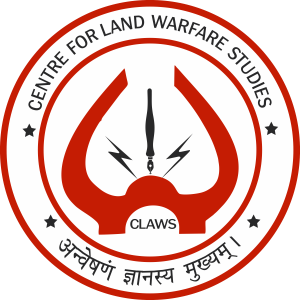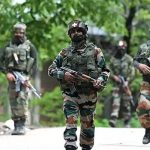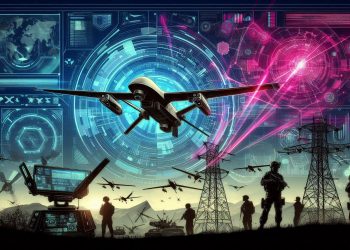An overarching role of Information Warfare (including cyberspace), space and special operations in support of modern day military operations at strategic, operational and tactical levels require integrated structures to enable calibration and coordination of operations in these domains[i]. The emerging challenges today have added a new ‘quad’ to the traditional three mediums of Land, Sea and Air; future conflict spectrum would encompass domains of Space, Cyber, Special Forces and Information Operations. Steps being initiated for establishment of the ‘Defense Cyber Agency[ii]’, ‘Defense Space Agency[iii]’ and ‘Armed Forces Special Operations Division[iv]” are only very basic steps but there is no central nodal agency for coalescing Information Operations. Though Ministry of Home Affairs(MHA) has organized a Cyber and Information Security (C&IS) Division[v]; deals with matters relating to Cyber Security, Cyber Crime, National Information Security Policy & Guidelines (NISPG) and implementation of NISPG, NATGRID etc. The synergy of the ‘quad’ and from the ‘quad’ is to enhance our capability, economize expenditure and enable a harmonized application of national power.
The promulgation of Joint Doctrine of Indian Armed Forces in 2017[vi] generated a new emphasis on ‘jointness” which was further brought to the forefront by the announcement by PM Narendra Modi on creation of the appointment of Chief of Defense Staff (CDS)[vii]. Current concepts of jointness and joint operations are defined in Joint Doctrine of Indian Armed Forces as “Jointness implies or denotes possessing an optimized capability to engage in Joint War-Fighting and is not limited to just Joint War Fighting (Joint Operations). It needs to be clearly understood and discerned that Jointness is a ‘Concept’, whereas Joint operations is evolution of both, Joint operations as well as single-Service operations are sub-sets of the larger whole of ‘conceptual Jointness’[viii].
Blending of operations and capabilities of the three Services, however, is no longer sufficient for information warfare (IW) and also information operations (IO) and the needs of national security in the information age. Information warfare takes place at the strategic level, while information operations (IO) involve using various information-related capabilities to implement the strategy. The ramifications of information revolution are so eclectic that it is sine qua non to develop a broader, more inclusive concept synchronizing all elements of national information power. The three Services are responding discordantly to the challenges of the information age and the imperatives of information warfare. They are uncertain about the convergence in the Lines of Effort (LoE)[ix] of IW, are deeply involved in exploring the means by which they can attain “single service command dominance” over their adversaries. While acknowledging and leveraging the recent dramatic technological advances in information and communication systems, the focus should clearly be on the human dimension of conflict, with the objective of maximizing human and operational flexibility instead of relying on technology to minimize friction.
The Army, is treading cautiously in this domain, however it has no qualms in accepting the technological opportunities of the future, and the Army’s vision for the next century, incorporating artificial intelligence into war-fighting. Addressing the 41st Defence Research and Development Organization (DRDO) Directors Conference in New Delhi on 15 Oct, the Chief of the Army Staff (COAS) stated that “it was necessary to prepare for non-contact warfare in the future”[x]. Future conflicts will be based on digitisation of the battlefield; heavily and critically dependent on the technologies of the information age. The Army is investigating the means and implications of these concepts and capabilities in its articulation in Land Warfare Doctrine-2018[xi].
Any discussion of IW that does not take into account the capabilities, responsibilities and operations of a myriad MoD organizations and agencies apart and aside from the Services, however, is incomplete. The most immediately apparent are those that respond directly to the Chairman of the Chiefs of Staff Committee or are in the direct chain of operational command through the National Security Advisor (NSA)[xii]. The NSA and agencies at his disposal are the most obvious players, because they are capable of leveraging various vectors of hybrid warfare both kinetic and non-kinetic. Unified Theatre Command[xiii] structures are a must to exponentially leverage and integrate information warfare into operational plans; indeed, some see it as a centerpiece of their future mission. The Unified Theatre Commands are jointness personified, as is the organization charged with supporting their IW/IO efforts, a Joint IW plan in future warfare is not possible without all elements of National Power and a joint force. Other members of the joint community also contribute to our IW capability.
However, several MoD, MHA and Cabinet Secretariat organizations outside the Service Head Quarters structure are also critical to our national IW/IO capability. The National Technical Research Organization (NTRO)[xiv] manages communications systems and technical intelligence and is critical in the effort to provide information assurance and security to communications. The Defense Intelligence Agency (DIA)[xv] must become the internal MoD focal point for intelligence matters relating to IW, while the National Security Council Secretariat (NSCS) is a key player in the effort to analyze the threat and provide information security and offensive IW/IO. Any discussion of national information power and security must take into account the responsibilities and capabilities of these external agencies. No discussion of “joint IW” would be complete without them. A comprehensive approach to joint IW, therefore, requires coordinating the activities and policies of several Joint an d inter-ministerial elements as well as the Services.
But, the new paradigm of information warfare is unsettling for traditional military warriors, because from a national security perspective several other elements of the government are crucially important to the use of information for national security, the development of national information power, and the conduct of IW in its broadest sense. For instance, at first glance Economic Security might seem miscast in the IW arena. However, one of the critical responsibilities is security of the currency, which tasks them with protecting the electronic funds transfer systems upon which our national economy is becoming increasingly dependent. The Ministry of Finance as well as Commerce is involved with issues such as electronic data encryption or national information infrastructure policy.
These might not seem like national security issues to a traditional warrior, but similar issues are becoming increasingly important to areas such as technology exports, terrorism, and the war on drugs, all of which have some degree of current military interest or involvement. Most other government agencies-Energy, Transportation, and more-also increasingly rely on the smooth and uninterrupted flow of electronic digital information to carry out their functions and thus have interest and involvement in national information power. Thus, the paradigm of joint IW/IO must incorporate not only the Services but the MoD and other government agencies as well. National Information Power, paradigm of joint information power has a broad and troubling perspective for the traditional concept of “jointness”. The “defense” of cyberspace (that place where computers and electronic telecommunications systems connect and interact, a field of study known as “telematics”) is being waged in part by entities such as the computer emergency response teams (CERTs)[xvi] at various agencies and by the entrepreneurs. Information age “warriors” cannot be trained by military drill instructors but by computer science departments around the country. Educational organizations and even private sector undertakings such as Wipro and Infosys also play a role. Myriad public interest groups represent all points of the political and social compass, from the Defense Intelligence Agency to Private Sector undertakings. They all help shape and set the political terrain and social context for the ongoing evolution of information age security issues.
In today’s complex military battle space, the need for shared situational awareness is increasing dramatically. Command and control centers need integrated, interoperable capabilities that enable people and systems to work more effectively together. Defense organizations will often have to collaborate with other forces and multiple government agencies and operate in an asymmetrical environment as the threats they face mutate and exacerbate. They must securely interoperate with other government agencies that are responsible for public safety and critical infrastructure protection. As a result, the Services must deploy and maintain systems and communications that can handle a vast array of rich-media content. These systems must allow decision makers to share information and connect from any location to any command post, either mobile or fixed. Constant challenges to budgets and resources often hinder the adoption of advanced communications systems. Proprietary systems, operating over multiple separate networks and using older, analog technology, lack sufficient support and are incapable of scaling effectively to meet evolving mission requirements. These disparate systems severely limit the ability to manage and share actionable information—real-time data that is accurate and relevant to the user. In turn this situation hinders critical situational awareness and effective response by slowing the speed of the decision-making loop.
Communications must enable a highly responsive and resilient environment where processes must provide a platform and integration across different technologies. Based on open standards architecture, this platform must be compatible with a suite of solutions and other applications. It should tie information stake holders in a way that would enable commanders to improve the effectiveness of their command and communication. As events develop, different types of information become relevant and appropriate and the communication solution must be able to adapt and meet these immediate tactical needs but also to extend command capabilities through ease of communication, greater situational awareness, and effective operational management tools.
Finally, and certainly not least, there is the commercial sector, because the issues involved in information age security would be meaningless without the activities, advances, and involvement of Infosys, Wipro, National Stock Exchange (NSE), and Reserve Bank of India (RBI) etc. The information revolution is, at heart, not a military revolution but a commercial, cultural and technological one, albeit with extremely important impact on and implications for the uniformed military. Neither the Services nor MoD are leading this revolution; rather they are running fast to merely stay abreast of the changes in technology and society. Summary National security in the information age and the development and exercise of the information component of national power requires a new paradigm of jointness that incorporates and synchronizes the policies and activities of all the players in the information realm. The development and exercise of national information power spans the organizational spectrum from the members in a military IW unit to the leadership of the largest information-related corporations and commercial entities. Although the MoD cannot direct these widespread activities, the paradigm of Joint IW/IO must of necessity encompass military, governmental, and private sector organizations and actions. This will require changes, both organizational and cultural, that will allow discussion and coordination of activities, even if the coordination is informal and non-directive. Perhaps the recent formation of National Critical Information Infrastructure Protection Centre (NCIIPC)[xvii] presents a baseline model for the integration of federal and private sector concepts and activities. Within the military Services, doctrines for IW/IO must take into account the dual nature of information power and help to set a mindset that sees the civil sector as a partner in the new paradigm of information age jointness. Without such a paradigm, information age national security increasingly will become a chimera towards which we will strive but find unattainable.
Communication solutions for joint information warfare and information operations must integrate heterogeneous databases and facilitate importation of data from secure external sources. This would demand an architectural approach to connecting multifarious networks with applications to deliver solutions. This approach focuses first and foremost on establishing a suite of application centered design principles that define and characterize a flexible and resilient networking environment. It would foundationally provide an integrated platform for situational awareness, information security and information operations. A network built on robust principles and elements can enable and optimize the delivery of applications even in a complex network environment of future battle space.
References
[i] Joint Doctrine for Indian Armed Forces, Directorate of Doctrine & 53 Printing Section, New Delhi, 2017, pg 48, Chapter-5, Section 10.
[ii] https://www.indiatoday.in/india/story/india-defence-cyber-agency-may-rear-admiral-mohit-1513381-2019-04-30 accessed on 12 Oct 19.
[iii] https://economictimes.indiatimes.com/news/defence/government-finalises-broad-contours-of-defence-space-agency/articleshow/69745921.cms?from=mdr accessed on 12 Oct 19.
[iv]https://www.tribuneindia.com/news/nation/tri-services-special-forces-div-gets-going/773091.html accessed on 13 Oct 19.
[v] https://mha.gov.in/division_of_mha/cyber-and-information-security-cis-division accessed on 31 Oct 19.
[vi]https://bharatshakti.in/wp;content/uploads/2015/09/Joint_Doctrine_Indian_Armed_Forces.pdf accessed on 01 Nov 19.
[vii] https://economictimes.indiatimes.com/news/defence/appointment-of-cds-will-boost-indias-national-security-and-power-projection-capabilities/articleshow/70718489.cms accessed on 30 Oct 19.
[viii] Joint Doctrine for Indian Armed Forces, Directorate of Doctrine & 53 Printing Section, New Delhi, 2017, pg 39, Chapter-4, Section 10.
[ix] A line of effort links multiple tasks and missions using the logic of purpose—cause and effect—to focus efforts toward establishing operational and strategic conditions. https://www.bits.de/NRANEU/others/jp-doctrine/jp5_0%2811%29.pdf accessed on 03 Nov 19.
[x] https://www.republicworld.com/india-news/general-news/general-bipin-rawat-start-preparing-for-non-contact-warfare.html accessed on 16 Oct 19.
[xi] https://thediplomat.com/2019/01/indias-land-warfare-doctrine-2018-hoping-for-the-best-preparing-for-the-worst/ accessed on 27 Oct 19.
[xii] The Economic Times.Spy Game: India readies cyber army to hack into hostile nations’ computer systems. The Economic Times. [Online] 06 August 2010. http://articles.economictimes.indiatimes.com/2010-08-06/ news/27590170_1_computer-systems-spy-game-hackers accessed on 29 Oct 19.
[xiii]https://www.moneycontrol.com/news/india/cds-is-pms-yes-to-hybrid-warfare-theatre-commands-military-reforms-4338891.html accessed on 29 Oct 19.
[xiv] https://ntro.gov.in/welcome. accessed on 17 Oct 19.
[xv] https://www.globalsecurity.org/intell/world/india/dia.htm accessed on 02 Nov 19.
[xvi] https://www.cert-in.org.in/ accessed 02 Nov 19.
[xvii] National Critical Information Infrastructure Protection Centre (NCIIPC) is an organization of the Government of India created under Sec 70A of the Information Technology Act, 2000 (amended 2008), through a gazette notification on 16th Jan 2014 Based in New Delhi, India, it is designated as the National Nodal Agency in respect of Critical Information Infrastructure Protection. https://nciipc.gov.in/ accessed on 02 Nov 19.














